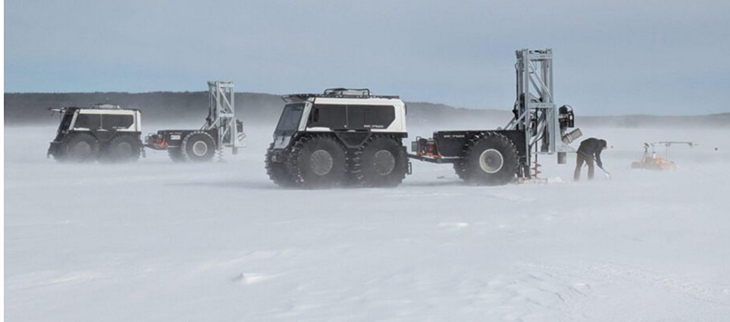

In an era where creative solutions to climate change are more urgently needed than ever, one Dutch man’s unconventional idea to protect the Arctic’s rapidly disappearing sea ice has sparked serious conversation — and even field testing.
Drawing inspiration from a centuries-old Dutch winter tradition, Fonger Ypma, a man from the Netherlands, wondered whether the techniques used to make temporary ice skating rinks could be scaled up to help stabilize the Arctic’s fragile environment.
The concept, which might sound improbable at first, gave birth to a nonprofit organization called Arctic Reflections, and against the odds, it has already moved beyond theory into promising real-world trials.
In the Netherlands, when winter temperatures drop, communities rely on local “IJsmeesters” — or Ice Masters — who flood meadows with water overnight. As temperatures fall, the water freezes into smooth, thick ice sheets suitable for skating festivals and community events. Ypma, who was familiar with this long-standing tradition, began to wonder whether a similar approach could be used on a much larger, more critical scale.
“The Arctic acts as a sort of mirror or heat shield for the Earth and a substantial part of global warming comes from the Earth’s surface becoming darker,” Ypma told The Guardian in an interview last year. “And so I thought: isn’t there some way to maintain that ice sheet for a bit longer until CO2 levels come down and the ice becomes regenerative? I had this naive idea: why not pump water on top of it?”
Initially, Ypma feared his idea might be too far-fetched. But after digging into existing scientific research, he discovered he wasn’t alone in considering this possibility. In fact, studies dating back several years had already examined the idea of pumping seawater onto existing sea ice to increase its thickness and resilience during the polar night, when temperatures drop and sunlight vanishes for months.
One of the most prominent pieces of research came from a 2016 study led by S.J. Desch, which explored the technical feasibility of this ice-creation strategy. While the study concluded it could work in theory, it estimated that “millions” of pumping stations would be needed across the Arctic to have a meaningful impact — a logistical and financial challenge that placed it firmly in the realm of science fiction.
Undeterred, Ypma and his team at Arctic Reflections took this foundational research and adapted it into a more focused and scalable approach.
Rather than trying to cover the entire Arctic with pumped seawater, Ypma’s updated concept involves creating thicker, more resilient ice at strategic locations and then allowing natural ocean currents to carry these ice floes deeper into the Arctic basin. This targeted strategy drastically reduces the number of pumping stations needed — from millions down to a manageable 100 to 1,000 — and offers a far more realistic path to preserving vast areas of seasonal sea ice.
According to Arctic Reflections’ estimates, this strategy could save around 100,000 square kilometers of sea ice per year, potentially buying precious time as global CO₂ levels remain high.
After initial lab-based research, Arctic Reflections began testing its methods in the field. The team’s first trials took place in Svalbard, a Norwegian archipelago in the Arctic Ocean. Following those early tests, the most recent round of trials was conducted along the icy coast of Newfoundland during the winter of 2024–2025.
While promising, the technique is not without challenges. As Ypma explained, water pumped onto snow can freeze effectively — but only if it remains exposed to air and wind. If a fresh snowfall covers the water before it freezes, the snow acts as insulation, trapping heat and preventing the water from solidifying. It’s an ironic complication in an environment defined by snow and ice.
To address this, Arctic Reflections’ latest experiments involve larger water pumps and more precise timing, as well as advanced tools to remotely monitor ice thickness, surface reflectivity, and temperature variations using drones and high-resolution cameras.
As sea ice loss accelerates — with potentially devastating consequences for global weather systems, ecosystems, and coastal communities — unconventional ideas like Ypma’s are drawing increased attention. Speaking with The Guardian, leaders of other Arctic preservation projects expressed a shared belief in both the audacity and necessity of such experiments.
The collective sentiment is clear: the situation is so dire that even ideas once dismissed as improbable now deserve serious consideration. As The Guardian noted, “the craziness of the whole endeavor is only matched by the urgency with which they believe something must be done to address sea ice loss.”
In that spirit, Arctic Reflections continues to refine its methods and collect critical data, hoping that one man’s ice rink-inspired brainstorm could play a meaningful role in protecting one of Earth’s most vital natural defenses.
What are your thoughts? Please comment below and share this news!
True Activist / Report a typo







